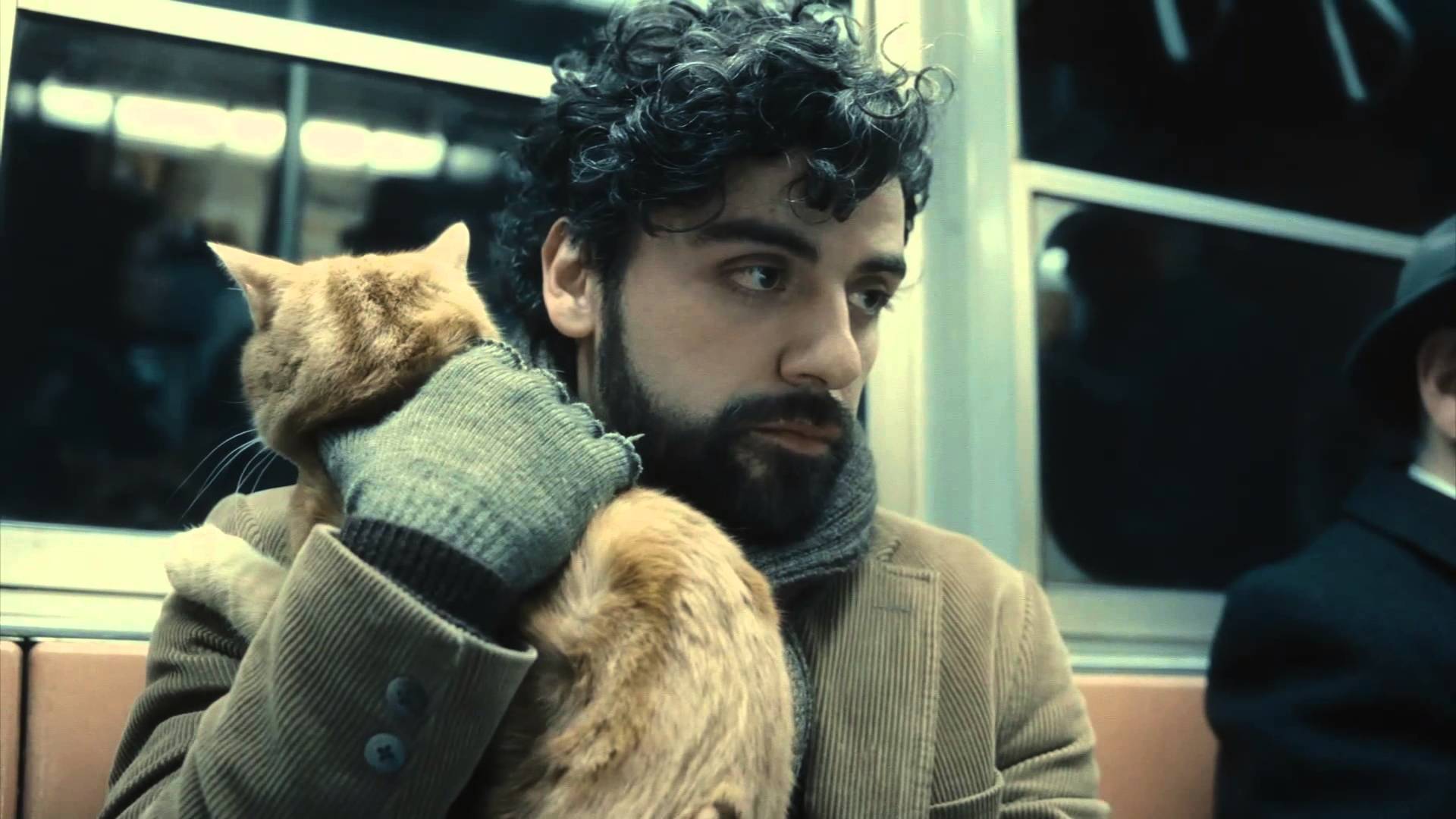
The Coen brothers are the directors who brought us “Fargo”, “No Country for Old Men”, and other striking achievements that follow their distinct cinematic and narrative style. In their films, they manage to meticulously portray unique and intriguing characters. The dialogues are masterly crafted, often containing witty and black humor; they explore various philosophical themes; and the cinematography is mesmerizing.
“Inside Llewyn Davis” is a 2013 film from the Coen brothers, a character study of Llewyn, a folk singer who is going through a grieving process over losing his partner. It is set in 1961, mostly in Greenwich Village in New York, a place celebrated by the beatniks who played a major role in the development of the folk music scene in the 60s. That very year, Bob Dylan played his first gig in a folk music venue in the Village. Greenwich Village was also well known for its art house movie theaters that showed independent and foreign films.
“Inside Llewyn Davis” presents the life journey of an artist who, although gifted, does not achieve self-realization and success. The inspiration for Llewyn’s character was the Brooklyn-born Dave Van Ronk, a talented blues and folk singer who performed alongside Dylan, but stayed in the Village until 2002.
John Strausbaugh, the author of a book on the Village and that era, said: “In 1961, if you were in any way an artistic person in America, in that vast American landscape, you were a lonely figure. You heard about San Francisco, you heard about Greenwich Village, and you went there. You didn’t play there to make money; you went there to be heard.”
Llewyn is an artist of great talent, but has a conflicting and distressed personality, which is at least partly, as we may guess, amplified by the loss of his companion. The film’s narration is fairly simple; it follows a few days in his life as he tries to make ends meet as a folk singer, but it also deals with personal problems he encounters.
Nevertheless, in exploring Llewyn’s struggles and downfalls, it manages to reach the audience in an exceptional way. This is achieved through the music that Llewyn and other folk singers play, both through memorable acting and also by creating a poignant atmosphere that gives the movie its soul and charm. This article shows seven reasons why “Inside Llewyn Davis” is a modern masterpiece.
1. Perfectly arranged melancholic mood
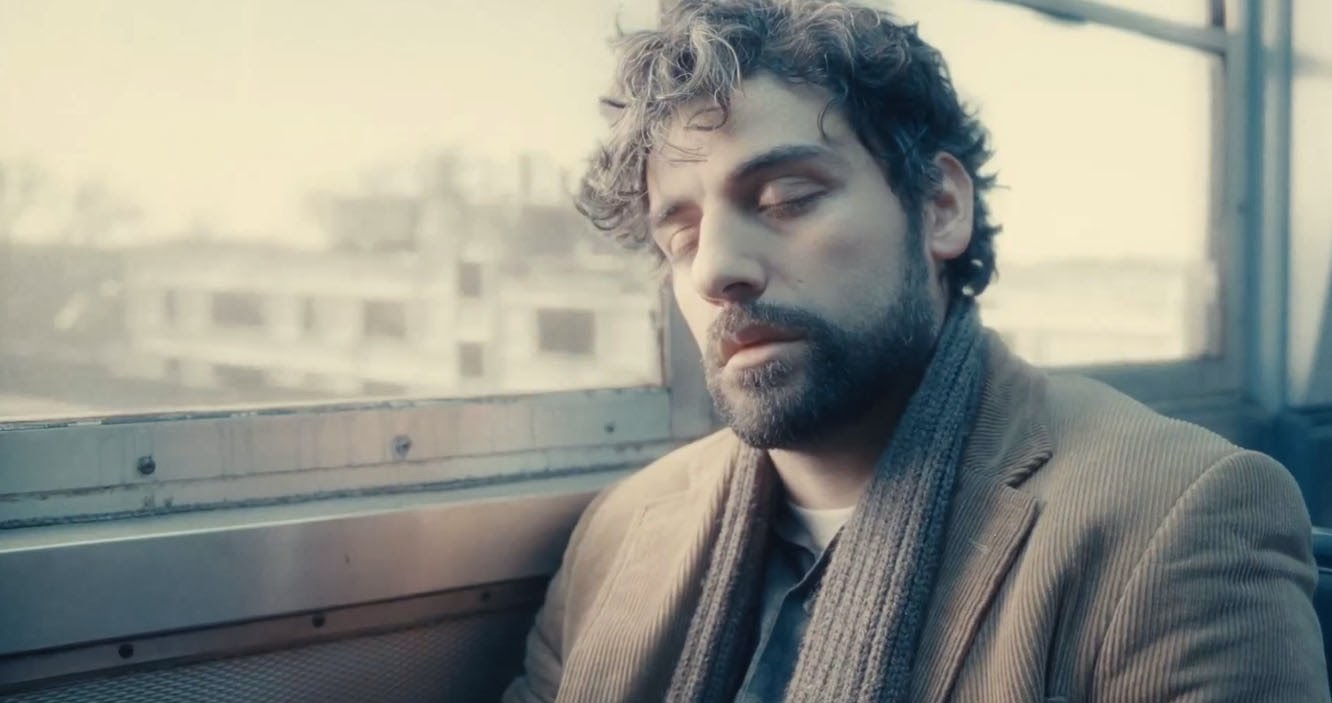
The mood that prevails in the film is melancholic, dealing with grief and loss as well as failure. At the beginning of the film, Llewyn looks at the record he and his friend Mike made, sadly observing the cover with the picture of Mike on it, now deceased. Although we are not yet aware that Mike is dead, this scene sets the tone of the film.
At moments, melancholy turns to anger, and the most vivid example is the scene in which Llewyn is asked by the Gorfeins to play a song for them during dinner. Mike’s mother starts to sing Mike’s part while Llewyn sings, and he becomes irritated and verbally aggressive. This mood is augmented by the songs played in the film, especially “Hang Me, Oh Hang Me”, the song with which the film opens, and “The Death of Queen Jane”.
The film is set in the winter, the sunlight is rare, and this, alongside gray and bleak urban landscapes, further enhances the feeling of melancholy. It affects the viewer in a profound way while provoking sympathy for Llewyn; the atmosphere that is created is poignant and signs of hope are rare, but the music and gorgeous visuals give it a great charm and beauty.
2. Stunning cinematography
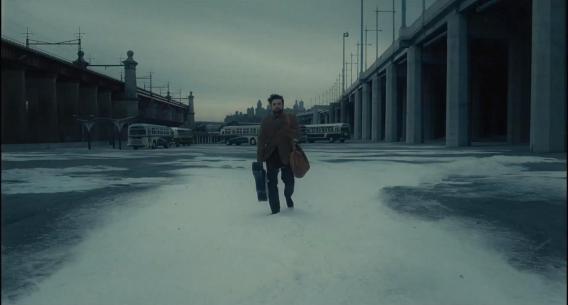
The cinematographer working on the film was Bruno Delbonnel, who also shot “Amélie”. Both the Coen brothers and Delbonnel thought of the cover of Bob Dylan’s album “The Freewheelin’ Bob Dylan” as a visual inspiration. The directors wanted a “slushy, New York look.” The shots are beautifully composed, with gray or cold colors prevailing; warmer colors are rather rare. When they appear, they are in sharp contrast to the color palette of the rest of the film.
The atmosphere often seems to be dreamlike and Delbonnel’s goal was, as he says, to portray sadness primarily with a lack of sunlight in the shots. Some scenes just fade into others, thus portraying the passing of time and a melancholy mood; one scene fades into depicting Llewyn on the bus, his face showing resignation and weariness.
The scene in which Llewyn drives back to New York in the night and hits a cat is particularly gorgeous. In an interview, Delbonnel said that due to the low budget of the film, these scenes were particularly hard to shoot. Nevertheless, the final product is mesmerizing.
When Llewyn gets out of the car and we see heavy snow falling slowly in the night, dark trees are in the background, the cat is limping through the snow, and opera music is playing. The camera focuses on Llewyn’s astonished and gloomy face and then shows the picturesque image again. Long shots are rather rare; medium shots and close-ups prevail, forming an atmosphere of intimacy. As viewers, we empathize with Llewyn’s troubles.
3. Oscar Isaac’s performance
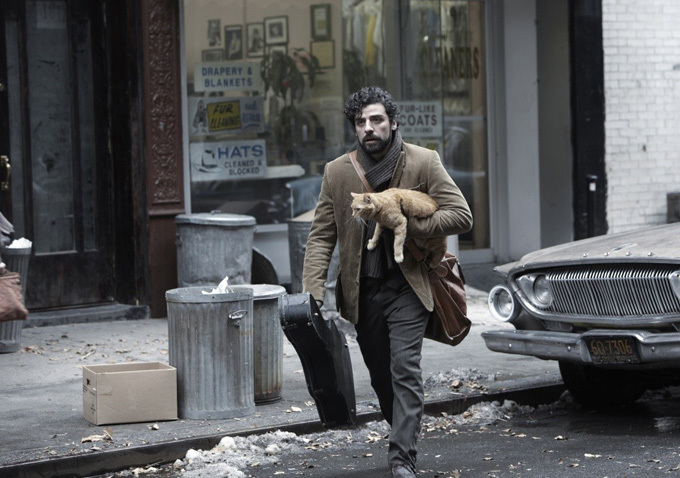
Oscar Isaac beautifully captures Llewyn’s character and the emotions with which he struggles, primarily grieving over the loss of his companion and the frustration with the fact that his career and his life (as he imagines it) are going nowhere.
Isaac plays Llewyn sincerely and genuinely, memorably expressing his character’s complex personality. He perfectly captures both the anger that arises from his unfavorable position in life, and the weariness his character expresses toward the end of the film: “I’m tired. I thought I just needed a night’s sleep, but it’s more than that.”
Isaac depicts an anti-hero who, despite all his flaws, can be empathized with and be found to be intriguing. That is accomplished mainly through Isaac’s acting, in which he portrays his character as sometimes juvenile and conflicting, but deeply human and sensitive.
Although he doesn’t show it often, the sensitivity of his character is primarily seen when he is performing and singing. In those moments, a certain passion is expressed and Isaac captures it exquisitely. During the greater part of the film, his face shows weariness and great sadness, and often resignation.
This is particularly vivid as he is driving back to New York; we can see that he is not just physically tired, but that life has brought him down and that he needs a clean start. He sees a road sign pointing toward Akron, a place where his child and ex-girlfriend reside; this scene, when observed in the context of the film and the expression on Llewyn’s face, tell much about his character and the feelings he goes through. Isaac seems to be living his role at the moment and that certainly provokes a lasting impression on the viewer.
4. Resembles a folk song
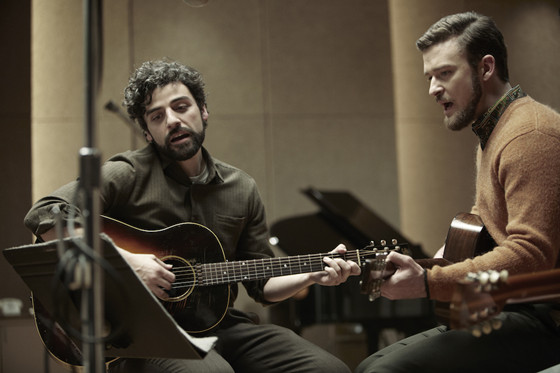
In an interview regarding the cinematography in the film, Delbonnel said: “I thought the script was like a folk song” and that “an American folk song is usually sad and depressing with very little hope.” It’s not just the fact that the script is like a folk song, but the film itself resembles a folk song since the mood is melancholic, the visuals give that impression as well, the acting amplifies the prevailing atmosphere, and surely, there is little hope in the end.
Ruth Moody’s folk song “Trouble and Woe” captures that feeling with words: “This world is full of trouble and woe/This world is full of trouble and woe/All I see is trouble, everywhere I go/I’m gonna sing the trouble that I know.”
Like a folk song, the film captures the immense sadness that life can bring, and a certain nostalgia, but one that transforms everyday feelings into beauty. Verses from Bob Dylan’s song “Like a Rolling Stone” seem to perfectly capture Llewyn’s position in life. They read: “How does it feel, how does it feel?/To be on your own, with no direction home/A complete unknown, like a rolling stone.”
Llewyn seems to be like “a rolling stone”, moving from couch to couch, from gig to gig, aiming to realize his talents, but he is practically an unknown, with no direction home.
5. Simple but far-reaching narrative
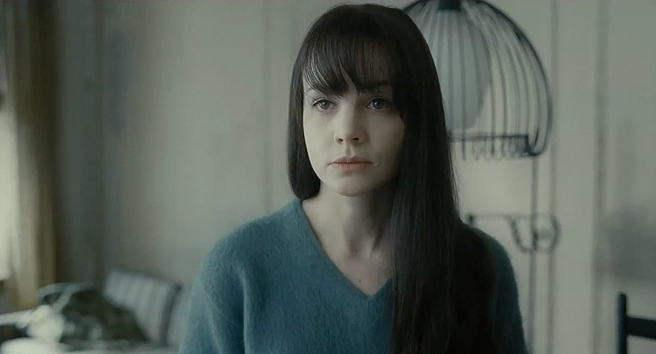
The story is fairly simple, following a week in the life of Llewyn who sleeps on the couches of his acquaintances, performs folk songs in clubs, and makes a trip to Chicago to meet a manager, hoping he will represent him. Nevertheless, the topics the film deals with are broad: the impact of death on a person, the place of art in the world of entertainment industry, and the desire to live a fulfilled life.
Llewyn says that he doesn’t want to “just exist”; he wants to be an artist and to realize his talents and himself as a person. The cat’s name Llewyn loses is Ulysses; the cat had lost its home but returned to it like Ulysses; unlike the cat, Llewyn fails to find himself “a home”, something to cling to. His odyssey, a quest for fulfillment, continues.
Nevertheless, the film isn’t just a character study; it strives to depict life in a distinct period of time rich with artistic accomplishments. A character referred to as Johnny Five recites verses from a poem by Peter Orlovsky, a poet created at the time in which the film is set. The film manages to vividly and creatively portray an era that exerted a great influence on the world of music.
6. Memorable music

Llewyn singing “Hang Me, Oh Hang Me” is a haunting and expressive performance capturing both indifference over one’s destiny, and a great desire toward experiencing life to the fullest: “Hang me, oh hang me, I’ll be dead and gone/Hang me, oh hang me, I’ll be dead and gone/Wouldn’t mind the hanging, but laying in the grave so long, poor boy/I been all around this world.”
When he sings “Fare Thee Well” at the end of the movie, his performance is passionate and electrifying, in contrast with the earlier ones that seem more reserved. The main theme in folk songs in the film is the loss of a loved person: “If I had wings like Norah’s dove/I’d fly up the river to the one I love.”
When Llewyn sings “The Shoals of Herring” to his sick father, a song he taped for him when he was eight years old, the moment is not a truly emotional one, but there is certain warmth in his performance. The other vocalists who perform in the film, among them Justin Timberlake, all give the movie its musical richness; the dazzling voices of the singers, accompanied by acoustic guitar, form an instant connection with the viewer. As they uplift the movie, they make its sadness sublime.
7. The first and the last scene
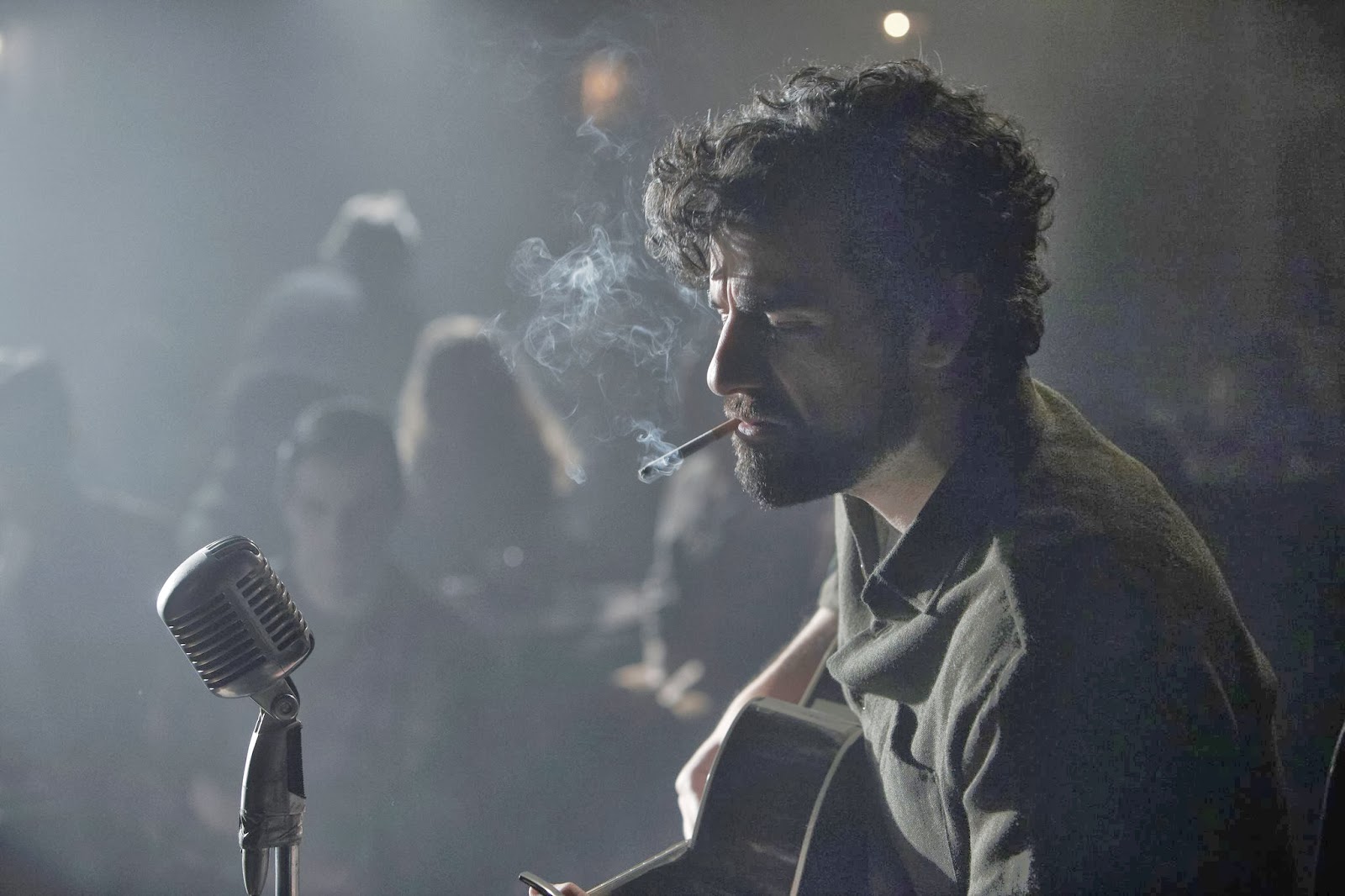
The film opens with Llewyn singing and his being beaten by a “guy in a suit” afterwards. It ends the same way, only this time we know why he was beaten, and Bob Dylan is singing in the background. The figure of Bob Dylan and his later success, of which the viewers are aware, is in sharp contrast to Llewyn’s downfalls as they have been shown in the film.
When club owner Pappi said to Llewyn that “a guy in a suit” claiming to be his friend is waiting for him, Llewyn could have seen it as someone offering him an opportunity to succeed, but in the end it’s just another instance of life beating him up.
This kind of envelopment has a great effect; it symbolizes the fact that after all that’s happened in the movie, he is right there where he was in the beginning, only more weary and burned out. In the end, there is little hope for him to realize himself, as the narration suggests.
Yet, the ending can still be seen as one that’s open; a fragment of a life is captured, he is saying “au revoir” to the man in a suit and the audience, but the look on his face indicates defiance, giving a hint of a smile and a will to continue striving.
Author Bio: Hrvoje Galich is a student of political science and writes expressionist poetry. He believes that Tristan und Isolde is the most beautiful artistic piece in the history of man. He loves movies by Andrei Tarkovsky, Michelangelo Antonioni, Ingmar Bergman and Shohei Imamura. He adores his cat “Meow”, the only cat in the world that can say her name.